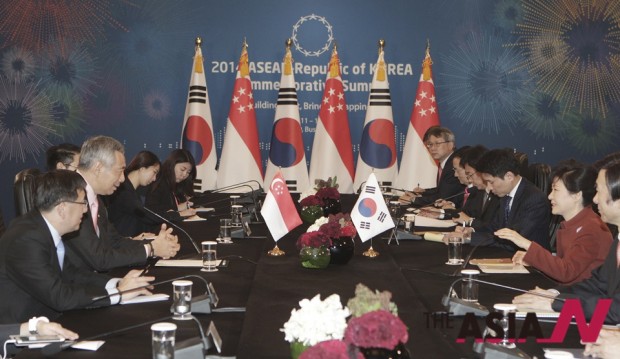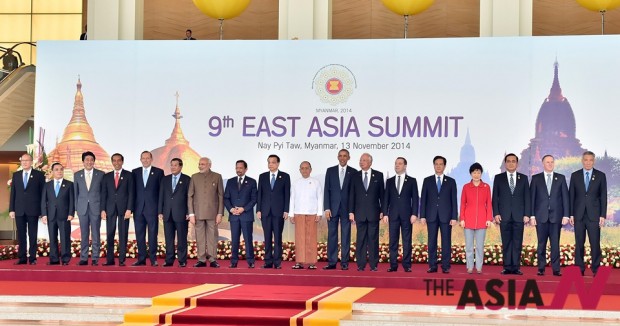The Rise of Asian Middle Powers

Their Formation, Development, and the Future of Asia
“Much have been said and written about the ‘rise’ of Asia, very little about Asia’s contribution to global governance,” says the Indian-born scholar Amitav Acharya in his 2011 publication. Not only do major powers of China, Japan and India, but also do South Korea, Indonesia, Malaysia and Singapore demand greater voice in international affairs which coincides with the sustained unprecedented economic growth that the region is experiencing. This can be seen to be both as a demand for individual country and regional representation. However, the central challenge is the limited and oftentimes hesitant contribution of Asian countries in global governance, moreover, the realization of regional integration. Capacity is willing, but the behavior is weak. In an era where Asian countries are dotted with countries that can be considered as Middle Powers, how can diplomacy further the development of the region?
Classification of Middle Powers of Asia
Cooper, Higgot and Nossal (1993) details that the division on where middle powers are classified is based on the gap between the foreign policy behavior and the representation of a state’s physical, economic and military capacity. The behavioral approach shows that so-called middle powers exert effort in demonstrating ‘international citizenship’ through multilateral solutions. They promote the status quo through international compromise. On the other hand, countries situated in the ‘middle’ of comparative measurements such as physical capacity (land mass and geographic position), economic capacity and military strength are included in the list of middle powers as well. Is it a requirement to have both have act and have the capacity to be considered a middle power?
Some Asian countries have been classified into a new group called ‘emerging middle powers’, countries which capacity in the three categories but has exerted less effort in promoting multilateralism for individual reasons. Asian countries in this group are less integrated in the world economy and have less stable social democracies, emerging from authoritarian rule from the end of the Cold War. It hasn’t been long for some of the countries in the ‘emerging middle powers’ group of Asia to be freed from the clutches of colonialism. As such, stabilizing their domestic policies is in the head of the agenda for claiming greater voice in international affairs for these countries.
Asian countries such as the Korea and Singapore who have been successful in developing their economies; Indonesia, Malaysia, the Philippines and Thailand who have been leading their own economies to provide increased social inclusion while promoting regionalism in Southeast Asia; Iran, Turkey and Israel, who have increasingly played a role in representing Asia—these are the Asian countries who have been at the forefront of promoting the role of middle powers in the region.
Adding to the newfound role of these countries, the concepts of internationalization or multilateralism for these countries is relatively new ideas, explains Acharya, because there is no consensus on where the boundaries of the region lie. National conceptions exist, put forward by the various elites in the different countries, but the concept of Asia or the role that Asia should bring to international order is yet to develop.

In Between Nation and Region
In an example, Robertson (2012) observes how Korea has characteristics that can be considered an ‘emerging middle power’, in which the unique security situation in the Korean Peninsula takes an important feature. Korea is placed 24th in the world based on population, the 13th biggest economy, and ranks 11th as the country with the biggest military expenditure, easily placing it in the top tier among middle powers. On the other hand, it did not pursue initiatives that it has excelled in such as those in arms control and disarmament, trade liberalization, conflict resolution, regional conflict resolution and environmental protection, but has always been in the shadow of the United States.
There have been efforts, however, such as the ‘Sunshine Policy’ of the Kim Dae-jung Administration, engagement bilaterally and multilaterally with Southeast Asian neighbors through various initiatives in the ASEAN mechanism, as well as international initiatives such as the Global Green Growth Institute. Robertson finally concludes that it is with middle powers such as Korea that diplomacy has a big potential to flourish, as information from these countries is perceived to be both unbiased and credible in comparison to great countries such as China.
The rise of China in the region has allowed middle powers in the region to flourish. Asian countries are not forced to follow the hegemonic tendencies of the United States, and the country to seen to exert more effort to the region, concerned about its decreasing influence. On the other hand, no country (perhaps with the exception to small powers such as Cambodia) has aligned itself to Chinese policies. We see India and Japan to be claiming part of the influence by legitimizing their ‘great’ status through gallant aid and support to neighboring countries. Asian middle powers serve as ‘linchpins’, connecting great powers together, where some are seen to have signs of hedging, making the best out of the diffused influence of the bygone hegemonic era.
Redefining ‘Asia’: an Urgent Goal for Middle Powers
Commitment to multilateralism clearly is the major reason behind the phenomenon of ‘emerging middle powers’ in Asia. As such, trust and confidence building has been an important factor in realizing a multipolar region. Active engagement of middle powers in Asia to form a coalition of states fully committed to international cooperation for ‘good international citizenship’ should be promoted, rather than that of individual interests. Realistically, leadership is important, however, opportunistic moves will be detrimental to any efforts that have been done before. The wider area of responsibility of Asian middle powers should be realized, lest the development divide in the region will continue.
Obviously, history may be an impediment to any possible cooperation, and it may take time. The ASEAN, for one, has been always criticized for not being able to push for long-standing agendas such as border conflict and development issues. However, it is true as well that it had gains on its own: its institutionalization enabled increased commitment, and furthermore, started communication. This is what Asia needs in order to maximize the potential of its growing middle powers.




